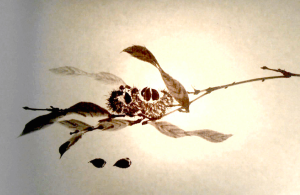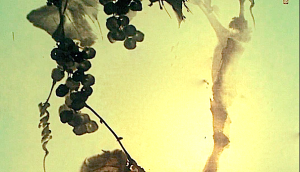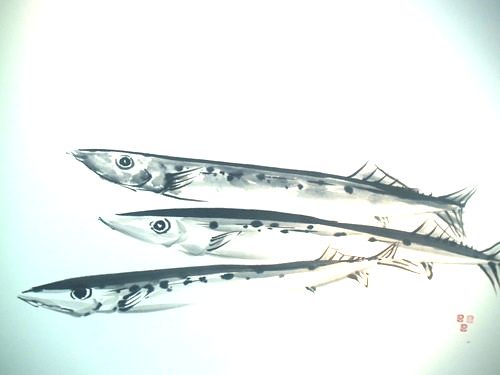Hello,chestnut is here.
Tips :
Burr body
Load very bright ink with more water than usual.
Burr body consists of three parts.
(Wash brush)
Fruits
Load black ink
To get pointed of the fruit, tap on the paper with the tip of brush hair first.
Then, lean the brush bar to depict the bottom of the fruit body.
Don’t pull the brush. Hold the same position.
Use the brush like stamp.
Burr
Make a brush for thin line drawing
Put the hair of brush on the ink stone to get very black ink on one side
Then, draw burr.
Put the top of the brush hair on the burr part depicted earlier.
Then move off to outside of burr body.
By starting to draw the burr line from the body, the ink is fading with taking up the water.
(Wash brush)
Leaves
Make up a brush for normal stroke. Load regular black ink
First, tap the brush tip on the paper.
Then push and pull the brush vertically along with moving
Keep the brush vertically toward the paper.
(Wash brush)
Load bright black ink
Then do the same movement as earlier.
You can get shade.
Enjoy 🙂




